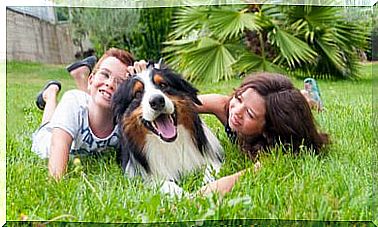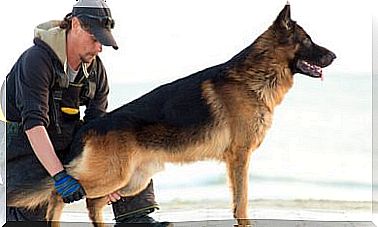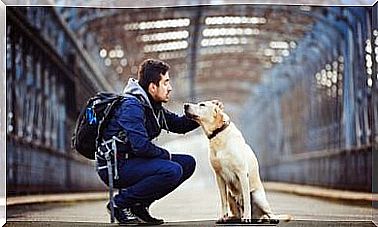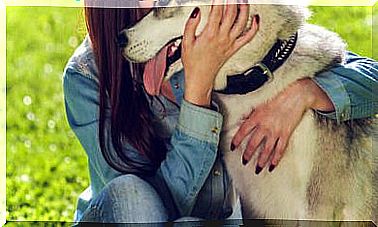Causes Of Muscle Atrophy In Dogs
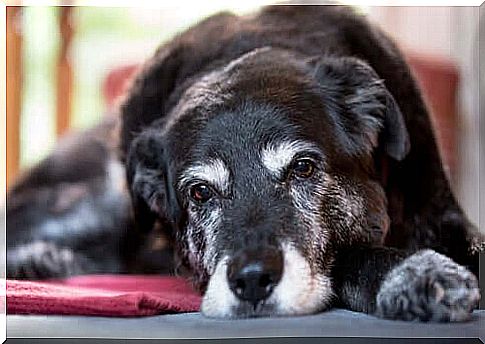
Muscle atrophy in dogs is quite common and specifically refers to the loss of muscle tissue. This muscle wasting usually starts early when it is associated with an injury or disease process.
Initially, it may go unnoticed, especially if your dog has a longer coat.
If your dog is limping or has had surgery, the atrophy will be more noticeable and faster. In fact, it may get a little worse before it gets better. In this article, we’ll talk about the most common causes of muscle atrophy in dogs.
Why is it common for muscle atrophy in dogs to be detected late?
Since dogs move using their four limbs, their balance is quite delicate. If they feel a little discomfort in one limb, they can shift their body weight to the other three to alleviate the aching limb.
For this reason, in the early stages, the situation can go unnoticed. However, if we feel the limbs, we can find a difference in muscle size. This indicates an atrophy in the affected limb.
Muscle atrophy mainly manifests with thinning and signs of weakness. Muscle loss can be a sign of a wide variety of conditions and illnesses. So if you notice muscle wasting, be sure to talk to your veterinarian about the condition.

Normal canine aging process
As the dog ages, it is natural for moderate but progressive muscle atrophy to occur. This process is caused by a lack of growth hormones and a decrease in the body’s metabolism.
As dogs age, their nutritional needs change and they cannot process proteins in the same way.
Therefore, older dogs often need a specialized diet with easily processed protein sources to help them maintain muscle mass.
The lower activity level of the elderly dog, due to lower energy levels, also leads to muscle loss. Note that this aging-associated muscle loss is normal, mild, and appears primarily in the hips, where the muscles are most evident.
Muscle atrophy associated with arthritis
Muscle atrophy in dogs occurs for a variety of reasons. It turns out that atrophy is a typical symptom if the dog has a painful condition.
Although arthritis affects the joints and not muscle tissue, it is common to cause muscle atrophy. It is an inflammatory process that degenerates the joints, usually in the hips and knees, and causes severe pain and dissatisfaction.
Pain control medications and physical therapy can minimize the effects of arthritis and improve activity in the sick dog. Consult a veterinarian so that he can prescribe the appropriate treatment.
Genetic predisposition to suffer from associated diseases
It is necessary to be aware of the conditions to which certain races are predisposed. For example, Labradors are prone to type II muscle fiber deficiency. They usually exhibit muscle loss before the age of one.
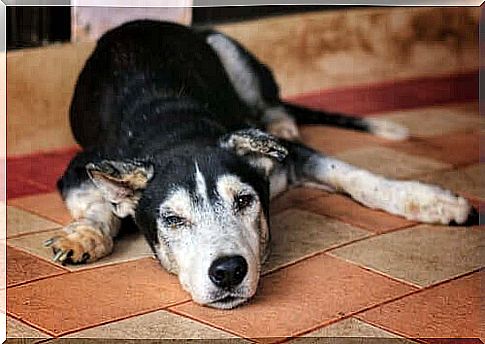
German Shepherds, on the other hand, are more likely to develop fibrotic myopathy, which usually manifests itself more in the dog’s thigh muscles. Other breeds, such as the Greyhound, will develop stress myopathy if they are forced to overuse their muscles.
Degenerative myelopathy is another disease that affects the spinal cord and then the extremities. This condition is common in German Shepherds but is also found in other breeds.
Muscle atrophy in dogs associated with inflammatory diseases
Muscle atrophy can occur in association with other types of inflammatory diseases, whether infectious or autoimmune. This involvement can only happen with one muscle or a group of muscles.
These illnesses often have other symptoms that will help the veterinarian properly diagnose the illness.
What you should know is that often myositis – or muscle inflammation – can cause atrophy. Myositis is caused by an abnormal reaction of your dog’s immune system against muscle tissue itself.
There is masticatory muscle myositis, also called eosinophilic myositis, a very serious autoimmune inflammatory disease. The dog develops antibodies that recognize and attack the M2 fibers of the masticatory muscles, causing them to atrophy.
Signs and Symptoms of Muscle Atrophy in Dogs
To help your pet in time, watch for the following signs and symptoms:
- Lethargy and apathy. The dog doesn’t want to move around too much.
- Flabby state. Look for flabby muscles in your dog that aren’t as stiff as they normally are. You may notice that your dog looks “softer” and also thinner.
Sometimes this type of muscle loss only affects certain parts of the body. For example, if your dog has arthritis or hind leg injury, you may notice that the hind legs get thinner, while the front legs are stretched out to compensate.
If you suspect your dog is losing muscle on one leg, compare it to the other side.





